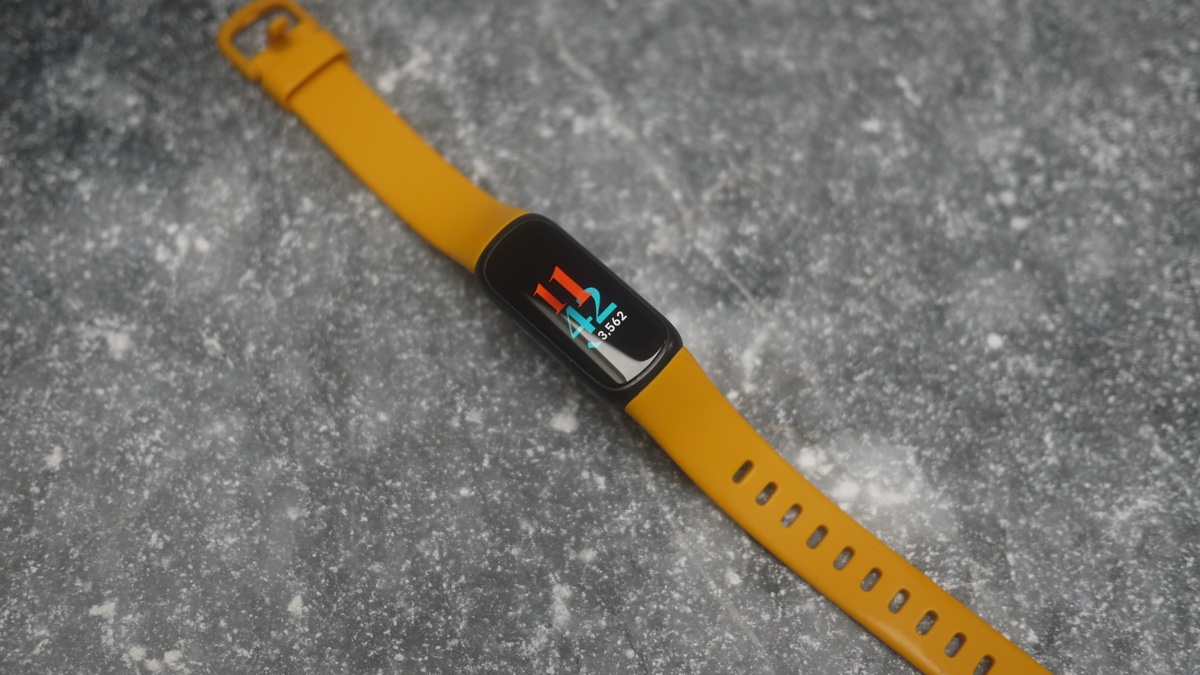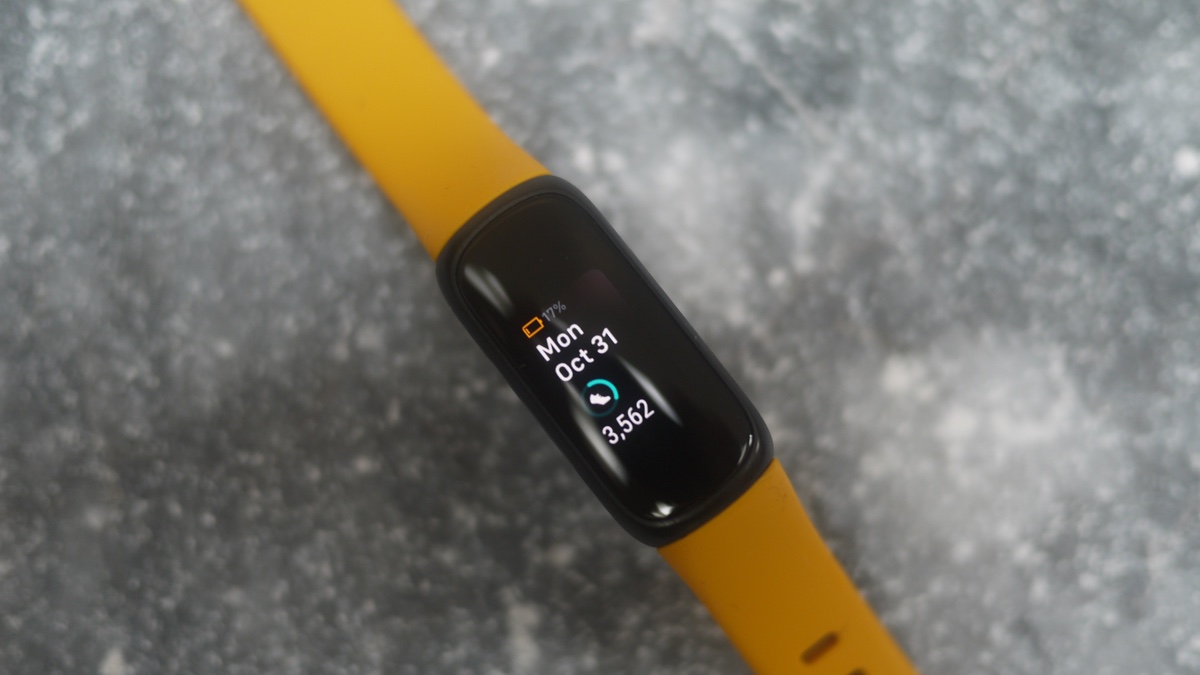
- Powerful health/fitness features
- A good looking band
- Brilliant battery life
- Double the price of budget options
- Small screen
In an era where wearables are blurring into medical-grade devices, there's something warm and familiar about the Fitbit Inspire 3.
The Inspire range is Fitbit’s entry-level fitness tracker and uses the band-like design that was synonymous with Fitbit and fitness trackers a decade ago.
It’s reassuringly simple, and, we’d wager, a form factor that people are more comfortable with than the ‘hybrid’ trackers such as the Huawei Band 7 - or even the Fitbit Charge 5.
But there are significant changes here on the third-generation Inspire. We’ve worn it, slept with it, and sweated with it. Here’s what we learned, and remember to check out our best Fitbit guide.
Buy the best: Top fitness trackers from our reviews
Design, comfort and usability

At the Inspire 3’s core is all the stuff Fitbit is good at - we found step tracking to be accurate and heart rate tracking also to be decent. There were no surprises with resting heart rate data, which was in line with our normal baselines.
During steady workouts, we found good levels of accuracy, and we'd be happy to recommend it to anyone that wants to track their run or fitness class. However, we wouldn’t recommend it for serious training, as the on-device feedback isn't really that user-friendly.
Fitbit uses its proprietary Active Zone Minutes to express whether you’re getting enough exercise. It’s a good system, which offers double points for elevated HR (going for a run or climbing the stairs over slow walking). However, we still feel that people will still naturally look at step counts, and that the Active Zone Minutes metric still struggles to cut through as a gauge of daily activity.

There are also hourly move reminders, too, which is good for desk workers - if you don’t ignore them, that is (which we always do).
Fitbit's sleep tracking is still some of the best in the business, as well, and stood up in terms of accuracy against a Whoop 4.0. The Sleep Score will take you to task for late or inconsistent bedtimes and drinking alcohol, and it's more than just a record of time spent in bed – it's a measure of actual quality sleep.
And the guided breathing modes found on Fitbit smartwatches are also present, which is good news for those looking for a mindfulness hit to pair with the onboard stress tracking.
As we've often said, we personally don't find the Stress Management data that meaningful – and, for us, the score is a persistent and unexciting 80/100. But, for some people, we get that this will be an interesting metric.
Why? Well, crucially, to get high scores, you will need to make positive changes to your routine, so there is an actionable benefit here - and that can't be said for many budget fitness trackers.
The backdrop of all this, of course, is that you'll need a Fitbit Premium sub ($7.99 per month) for the really granular stuff.
To conclude, the Fitbit Inspire 3 is a complete fitness tracker and makes few sacrifices. And, as we’ll cover next, Fitbit has made it better than ever.
New screen

While the Sense 2 and Versa 4 have been minor upgrades, the changes to the Inspire 3 are significant.
Previous Inspire trackers have been ugly ducklings compared to the likes of the Fitbit Luxe and Charge, which have justified their larger price tags with improved design.
Historically, that has made it tough for previous models to live up to its $99.99 / £89.99 price tag.
The Inspire 3, however, finally packs a color AMOLED display, which means it’s a far more pleasant device to wear and interact with.

You can get notifications (see above), but, despite the revamped screen, it was still too cramped to be a natural experience. We settled on just having it alert to calls. But it’s still useful, especially if you keep your phone in your bag.
It also comes in a host of vibrant strap colors. We got the dusky yellow version. There’s also lilac and straight-up black. It’s not as luxurious as the metallic Luxe, but it was certainly a crowd-pleaser.
The Inspire 3 uses a touchscreen, with sideswipes to access features, such as exercise modes, timers, and settings. Swiping up and down shows the main metrics of steps, Active Zone Minutes, and calories burned.
There’s a touch-sensitive panel on the left side, too, that returns you to the home screen.
The small screen does make navigation fiddly. It’s far easier to just get the stats in the Fitbit app, and, in our testing, we mainly used the Inspire 3 to tell the time.
On that note, the screen is not always-on by default, but you can enable that in the settings. There’s a huge impact on battery life - more on that next - but, for us, that’s a no-brainer.
A side note, which is often missed about the Fitbit Inspire 3, is that it’s able to be clipped to the body using an optional accessory.
That means it can collect basic data from waistbands, bras, or clothes – although, clearly, that’s limited to step data, because heart rate can’t be read if not placed against the wrist.
Battery life testing

Battery life was another beneficiary of the Inspire 3, and it boasts 10 days as standard.
We’ve seen some big battery life estimates from rivals, but it’s important to remember that Fitbit’s estimate includes SpO2 tracking, as well as advanced sleep and stress monitoring - all of which are usually excluded from estimates by the likes of Huawei and Xiaomi.
So, how did it play out in practice?
Without the always-on display, we got around a week’s battery life. And with the AOD turned on, around 3-4 days. It means you can take the Inspire 3 on a short break without the charger simply by toggling off the screen.
Not too shabby, even if we can’t see too many people reaching the full 10 days promised.
In terms of charging, we got around 40% battery in 15 mins of charging – so, when you do need to juice up, it’s also very easy to do so.
Health and wellness features

Fitbit has made several large additions to the Inspire 3 that, in our opinion, dramatically improve its value proposition.
In our testing, we were impressed by the versatility and power of the Inspire 3 as a fitness tracker, wellness device and even a workout partner.
Our favorite Fitbit feature is the Health Metrics dashboard, which gives you an at-a-glance overview of your wellness by showing core stats against your own personal baselines. If one of these stats goes wrong, your body is telling you something.
And, for the first time, the Inspire 3 can show a complete set of Heath Metrics features.
That’s due to the addition of a SpO2 sensor for the first time, so blood oxygen saturation is added to the dashboard – and you can see Estimated Oxygen Variation during sleep if you’re a Premium subscriber. That brings the Inspire 3 right alongside the rest of the mainstream Fitbit line-up.
And the company has also added a temperature sensor, so the Inspire 3 will track your skin temperature variation in the Health Metrics section. Spikes away from baselines can be a signal of illness or a major hangover.
However, the company doesn’t use this data for menstrual tracking, as we’ve seen on the Apple Watch Series 8.
These two new sensors make the Inspire 3 a fully-fledged Fitbit – and hugely recommendable.

While the Inspire 3 doesn’t have the ECG sensor found on the Charge 5 / Sense 2, it does support Fitbit’s new irregular heart rate notifications, which use the optical sensor to scan for Afib. This means you get much of the benefit of an ECG sensor on Fitbit’s entry-level device.
There are plenty of workout modes, too, with automatic workout detection, and it’s swim-proof, so you can take in the pool thanks to the 5ATM water resistance rating.
Runners can also use Connected GPS if they take their smartphone along. We wouldn’t recommend this for passionate runners (the on-screen information is especially poor for running), but, if you enjoy a casual run or you're starting out with fitness, it’s more than effective.
And if you take out a Fitbit Premium subscription, you’ll also get a host of excellent stats.
Daily Readiness Score, advanced sleep score breakdowns and oxygen saturation stats, the Wellness Report, and Sleep Profiles are all available on the device if you pay $7.99 per month.
This is both a blessing and a curse. If you buy the Inspire 3, you will get a very complete Fitbit experience – but, like other devices, there’s an ongoing cost for the juiciest stuff.
How we test
